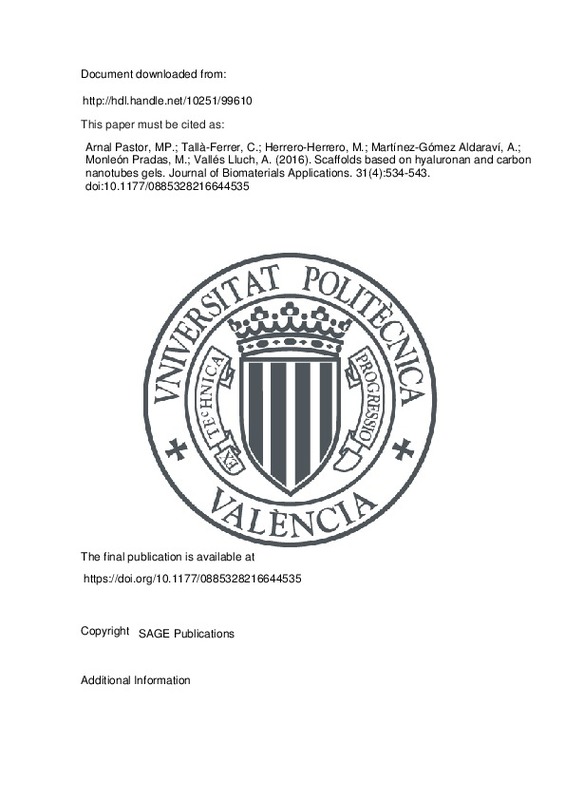JavaScript is disabled for your browser. Some features of this site may not work without it.
Buscar en RiuNet
Listar
Mi cuenta
Estadísticas
Ayuda RiuNet
Admin. UPV
Scaffolds based on hyaluronan and carbon nanotubes gels
Mostrar el registro completo del ítem
Arnal Pastor, MP.; Tallà-Ferrer, C.; Herrero-Herrero, M.; Martínez-Gómez Aldaraví, A.; Monleón Pradas, M.; Vallés Lluch, A. (2016). Scaffolds based on hyaluronan and carbon nanotubes gels. Journal of Biomaterials Applications. 31(4):534-543. https://doi.org/10.1177/0885328216644535
Por favor, use este identificador para citar o enlazar este ítem: http://hdl.handle.net/10251/99610
Ficheros en el ítem
Metadatos del ítem
| Título: | Scaffolds based on hyaluronan and carbon nanotubes gels | |
| Autor: | Arnal Pastor, María Pilar Tallà-Ferrer, C. Martínez-Gómez Aldaraví, A. | |
| Entidad UPV: |
|
|
| Fecha difusión: |
|
|
| Resumen: |
[EN] Physico-chemical and mechanical properties of hyaluronic acid/carbon nanotubes nanohybrids have been correlated with the proportion of inorganic nanophase and the preparation procedure. The mass fraction of -COOH ...[+]
|
|
| Palabras clave: |
|
|
| Derechos de uso: | Reserva de todos los derechos | |
| Fuente: |
|
|
| DOI: |
|
|
| Editorial: |
|
|
| Versión del editor: | https://doi.org/10.1177/0885328216644535 | |
| Código del Proyecto: |
|
|
| Agradecimientos: |
The author(s) disclosed receipt of the following financial support for the research, authorship, and/or publication of this article: Contract grant sponsor: Spanish Ministerio de Economia y Competitividad; contract grant ...[+]
|
|
| Tipo: |
|







![[Cerrado]](/themes/UPV/images/candado.png)


